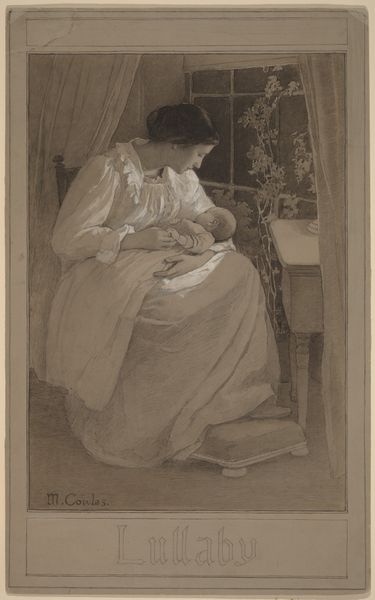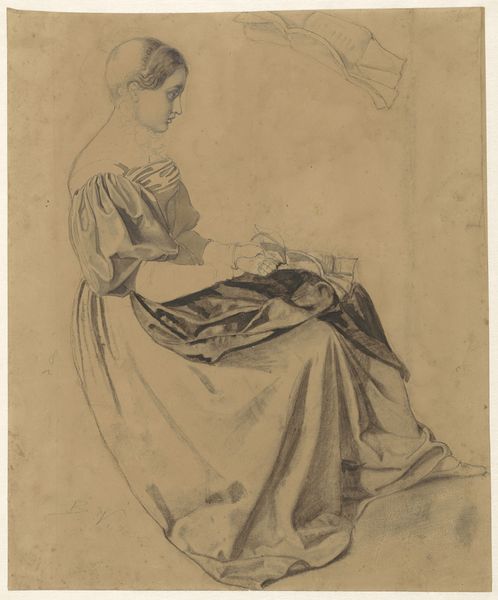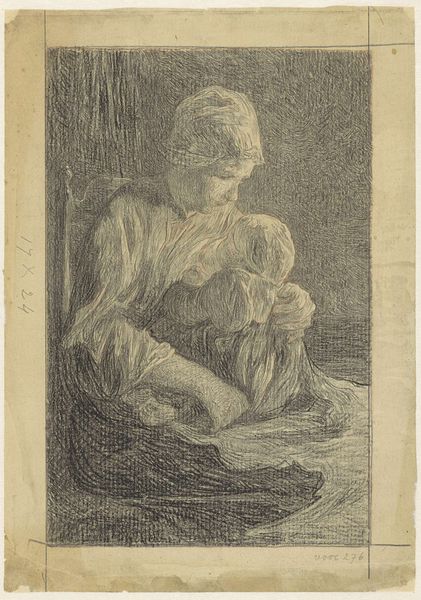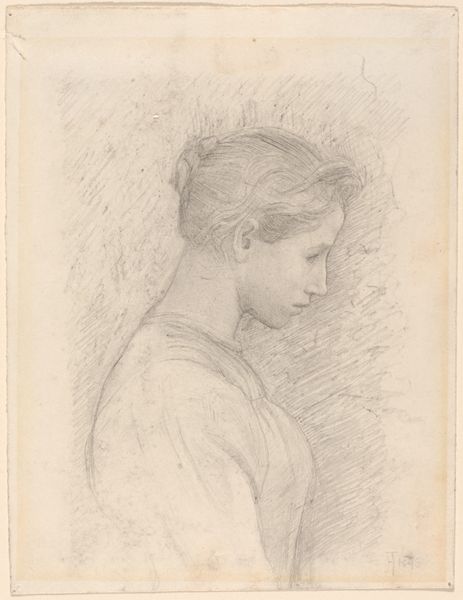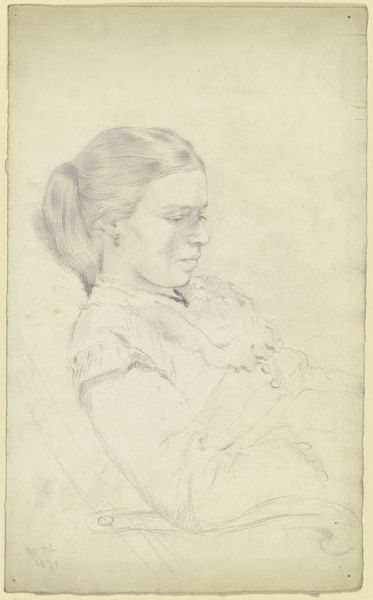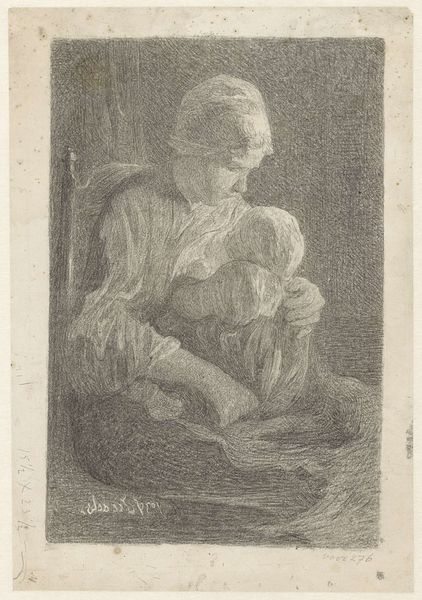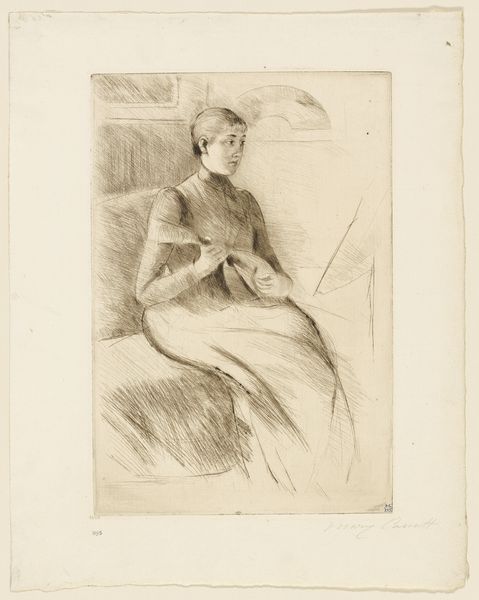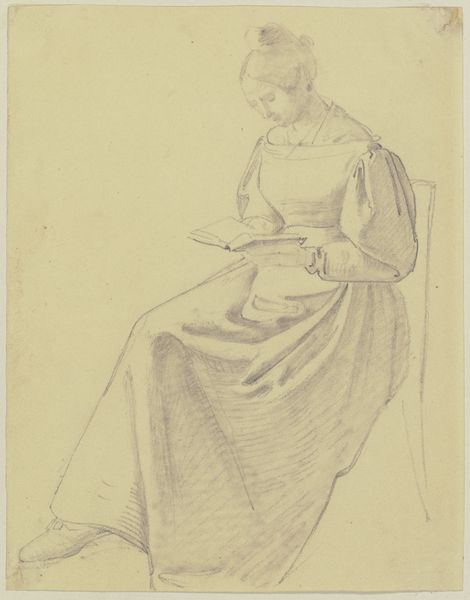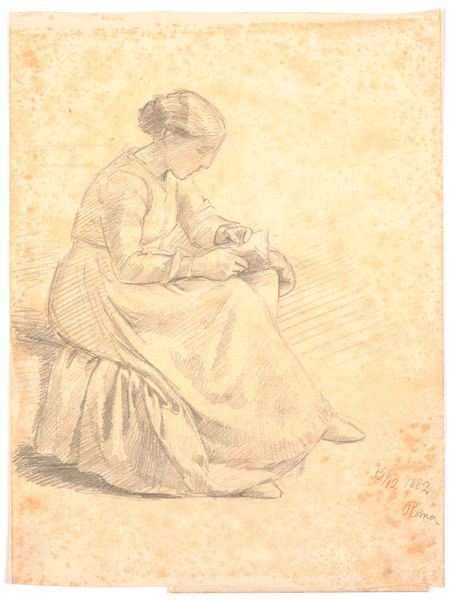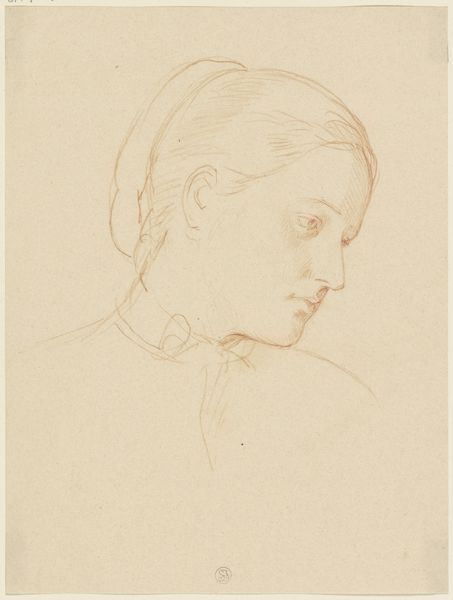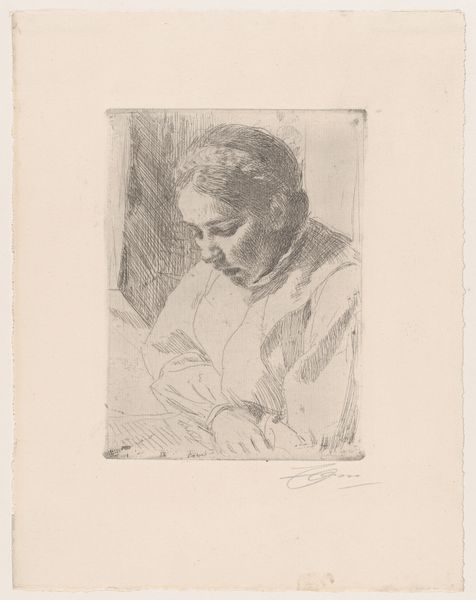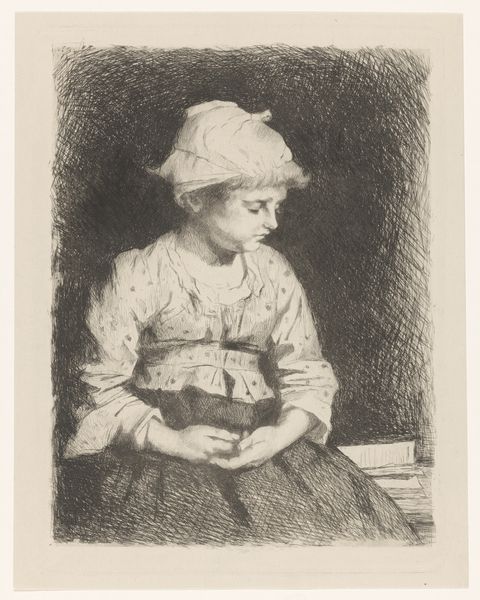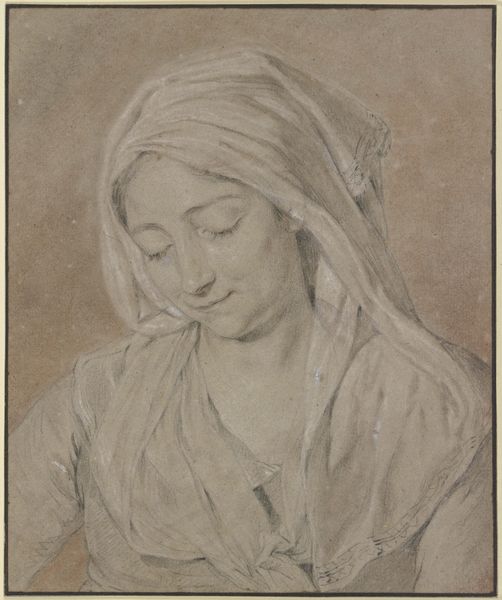
Dimensions: overall: 38.8 x 25.6 cm (15 1/4 x 10 1/16 in.)
Copyright: National Gallery of Art: CC0 1.0
Curator: Before us is Edgar Degas' "Woman Embroidering," believed to have been created sometime between 1855 and 1860. It’s a captivating charcoal and pastel drawing. Editor: My initial reaction is one of quiet intensity. The soft charcoal seems to shroud the woman in a delicate melancholy. She’s completely absorbed, isn't she? Curator: Absolutely. Degas has chosen to portray this woman—we don’t know her identity—in a very intimate moment of labor. I am struck by how the act of embroidery is centered. Her labor, like so many women of her time, was integral to the production and economy of her social world, creating items of necessity and beauty. Editor: It’s interesting you mention production, because needlework for women has long been seen as both a domestic craft and a symbol of confinement. Is Degas commenting on that, do you think? Highlighting the intersection of gender and labour in 19th-century France? Curator: That's a valuable point. It’s difficult to ignore the societal expectations placed upon women, particularly concerning domestic skills and its intersections with artistic creation. Degas often challenged artistic conventions, so situating this piece within a broader feminist discourse might not be unfounded. Editor: Looking closely, it's remarkable how the textures come alive. The charcoal captures the soft fabric of her dress, while her hands, rendered with incredible detail, are actively working. He understood the mechanics and motions of the female hand and female labor in incredible detail. Curator: Notice too, how her bonnet obscures some of her face, creating this shadow that only emphasizes her downward gaze. It redirects us back to the process itself – the production, the tools, and the end product being made. Degas shows us not necessarily *who* she is, but *what* she is making and *how* she is making it. Editor: I appreciate how this image captures a woman who is deep in contemplation, while concurrently physically engaged in her daily activity. We get a window into the past but it raises a whole range of contemporary questions surrounding women’s artistic work, both past and present. Curator: It does leave us with a lot to consider about art and social role of craft production. Editor: It certainly does; it allows a reflection on both art and history from new angles.
Comments
No comments
Be the first to comment and join the conversation on the ultimate creative platform.
